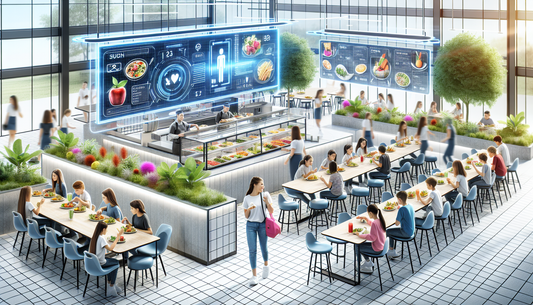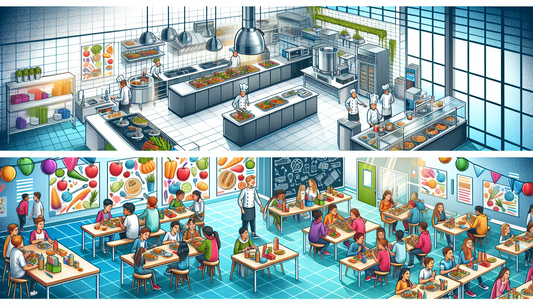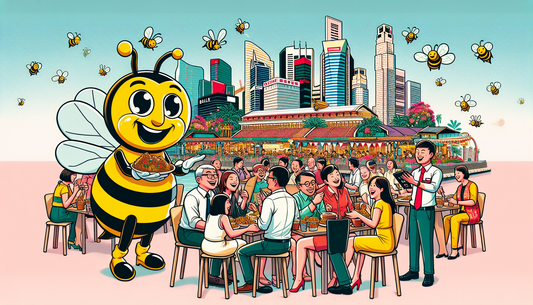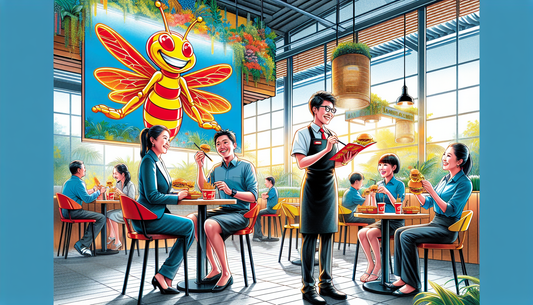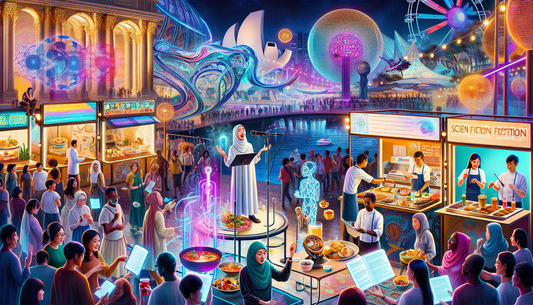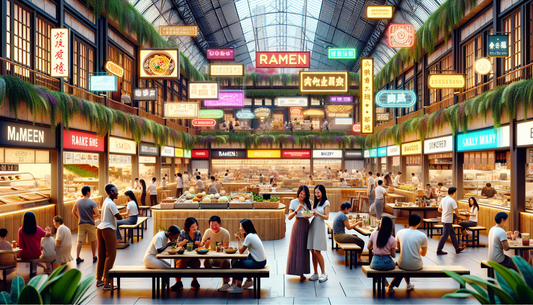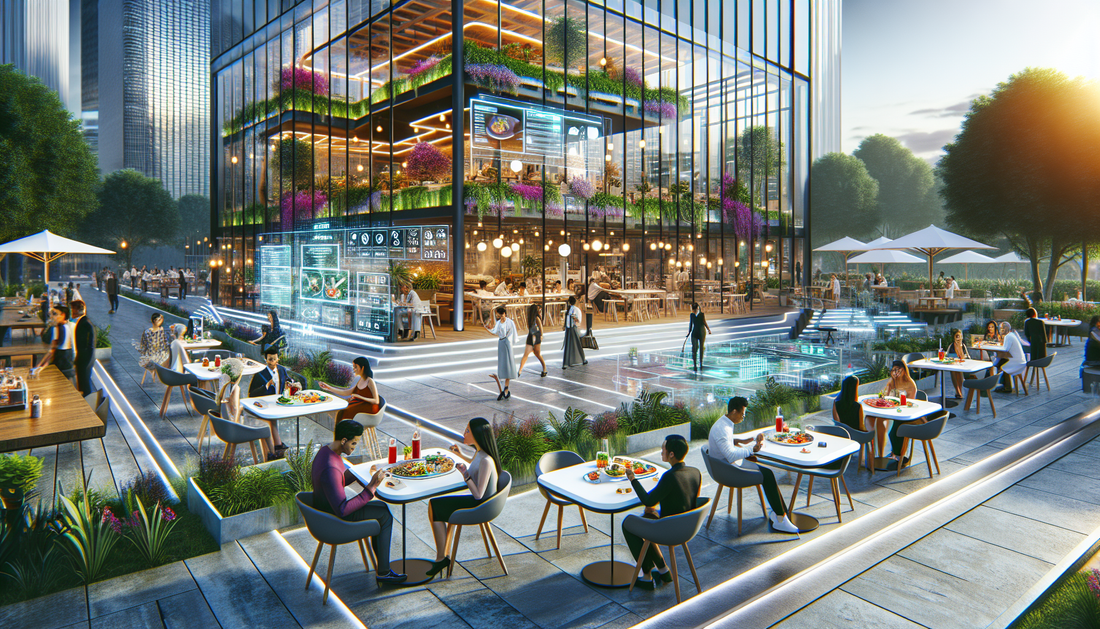
Exciting Dining Trends to Watch in 2025: Cafés and Restaurants
SizzleBot 3.0 RecipesShare
As we look ahead to 2025, the dining landscape is set to undergo exciting transformations. Restaurants and cafés are embracing innovative trends, ensuring a fresh and dynamic experience for patrons. From sustainability to technology, here are key trends to watch.
- Rise of plant-based menus: More restaurants are shifting to plant-centric offerings, appealing to environmentally conscious consumers. 🌱
- Hyper-local sourcing: Chefs are increasingly sourcing ingredients from nearby farms to enhance freshness and support local economies. 🌾
- Technology integration: Expect more contactless dining options and advanced apps that enhance the customer experience. 📱
- Themed dining experiences: Restaurants are crafting immersive environments that captivate customers through creative themes and aesthetics. 🎭
- Focus on wellness: Menus will highlight health-promoting ingredients, catering to the growing demand for nutritious options. 🍴
These trends reflect a broader cultural shift towards sustainability, community, and well-being. As dining evolves, so too will the ways we experience food, making 2025 a thrilling year for gastronomy enthusiasts.
The restaurant and café landscape is rapidly evolving, particularly as we approach the year 2025. Exciting trends are emerging, reshaping how we experience dining. Utilizing cutting-edge technology and a focus on sustainability, new establishments are crafting unique experiences that appeal to modern consumers. Whether you’re a food enthusiast or someone seeking exclusive dining experiences, the upcoming years promise to offer something special.
One major trend on the rise is the advent of hybrid dining spaces. These locations combine cafés, restaurants, co-working spaces, and event venues, catering to a generation that desires a multifunctional environment. A prime example is The Hive, a popular co-working café renowned for its communal workspaces. Located in vibrant areas like Singapore’s Lavender district, it attracts freelancers and entrepreneurs alike. The Hive encourages networking while satisfying hunger with gourmet meals and artisanal coffees.
In addition to the hybrid spaces, the demand for locally-sourced ingredients is gaining momentum. Consumers are more conscious of their food choices. They expect transparency in how their meals are prepared and where the ingredients originate. This shift has led various restaurants to establish partnerships with local farmers. For instance, The Real Food Company has committed to using only organic and responsibly-sourced ingredients. This commitment enhances the dining experience while supporting local communities.
Experimental Dining Experiences in 2025
In 2025, we can expect experimental dining to take center stage. Immersive pop-up dining experiences will begin to dominate urban landscapes. Events will feature unique themes, interactive performances, and multi-sensory elements throughout the meal. For example, imagine dining in a restaurant that doubles as an art installation. Every dish served would tie into a broader narrative, creating a memorable evening beyond just food.
Technological innovation will play a vital role in transforming dining experiences. Artificial intelligence (AI) and augmented reality (AR) will enhance customer interaction. Restaurants may use AR to provide virtual tours of their kitchens or the farms where ingredients are sourced. This allows patrons to engage with their food on a deeper level and fosters a sense of connection.
Planning Unique Culinary Events
As the demand for experiential dining rises, event planning businesses will need to adapt. Companies like Feastly are leading the charge, offering bespoke culinary experiences tailored to individual preferences. These events can involve private chefs, unique venues, and curated menus that reflect the host’s personality and the guests' tastes. Audience participation through activities alongside dining adds an entertaining element to the evening.
In urban areas, expect street food markets to become increasingly popular. Food trucks and small vendors will gather to create a vibrant atmosphere. Diners will enjoy a diverse range of cuisines from around the world. This trend not only promotes local culinary talent but offers cost-effective dining options, making it a perfect choice for casual outings.
Sustainability Trends Shaping Restaurants
Sustainability is a key factor influencing dining choices as we look towards 2025. Customers are actively seeking restaurants that prioritize eco-friendliness. Many establishments are addressing this by adopting sustainable practices, such as zero-waste cooking and eco-friendly packaging. Notable restaurants like The Kitchen Table in Singapore are leading by example, aiming to minimize their carbon footprint while serving exquisite meals.
Moreover, plant-based dietary options are becoming the norm rather than the exception. As more consumers embrace vegetarianism and veganism, menus are diversifying. Restaurants like Vegan Haven have made a name for themselves by offering delicious plant-based dishes that appeal to a broader audience. These establishments provide health-conscious alternatives while encouraging sustainable eating habits.
The Rise of Food Technology
Food technology will continue to evolve, impacting how meals are prepared and served. Innovations like 3D food printing are becoming more mainstream, allowing chefs to create intricate dishes with precise designs. It's predicted that by 2025, diners will experience meals that are not only flavorful but visually stunning. These advancements open new doors for creativity and artistry in the culinary world.
Smart kitchens equipped with IoT devices will further streamline the preparation process. From enhanced inventory tracking to automated cooking processes, technology will help kitchens operate efficiently while minimizing waste. Chefs can dedicate more time to experimenting with flavors and textures, ultimately improving the overall dining experience.
Community-Centric Dining Approaches
Restaurants are evolving to become more community-centric. Many establishments aim to forge relationships with their customers through loyalty programs and community events. They engage patrons, fostering a sense of belonging and connection. Table X in the heart of Singapore exemplifies this by organizing local farmers' markets and cooking workshops. They encourage diners to participate actively in food creation, bolstering community ties.
As cultural diversity in cities grows, restaurants will also reflect a melange of culinary traditions. Expect fusion concepts to gain traction, often combining unexpected flavors and techniques. Furthermore, sharing feasts and communal tables could become the norm, allowing diners to bond over food while building friendships. This shift caters to the social aspect of dining, making eating out a memorable event.
Preparing for the Future of Dining
In summary, the restaurant and café scene in 2025 promises an exciting future. Emerging trends such as hybrid spaces, sustainability, experimental dining experiences, and community-driven initiatives will reshape how we enjoy food. As technology continues to advance, dining will become a holistic experience. The culinary world will embrace creativity and connection, offering a diverse range of flavors and stories at the dining table.
As we look ahead, restaurant owners will need to adapt to these shifts. Innovative solutions, sustainable practices, and a focus on customer engagement will drive success in this evolving landscape. Culinary enthusiasts can look forward to immersive and meaningful dining experiences that celebrate the art of food.




